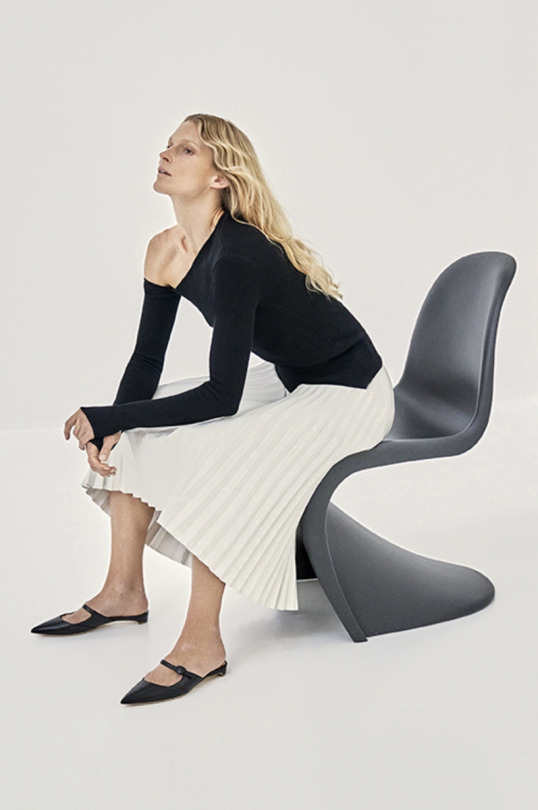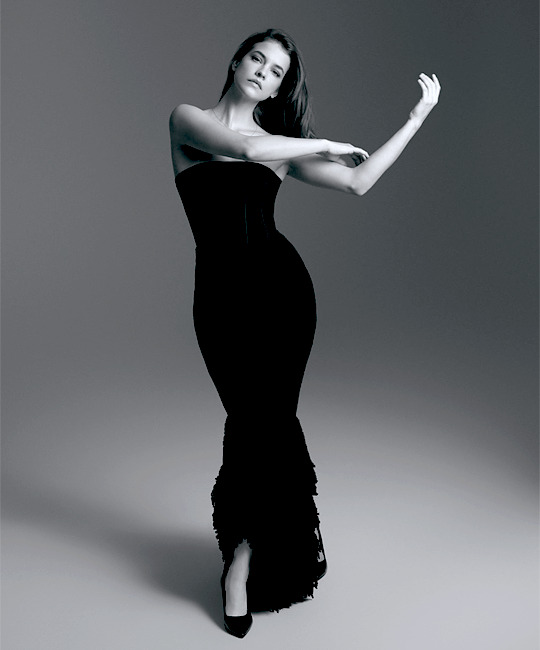#ELLE HUNGARY
Photo


Barbara Palvin by David Ajkai for ELLE Hungary December 2022
#barbara palvin#supermodel#beauty#david ajkai#elle magazine#elle#elle hungary#editorial#fashion editorial#fashion#fashion photography#photography#fw22
162 notes
·
View notes
Photo

Barbara Palvin // Elle Hungary Nov. / Dec. 2022
96 notes
·
View notes
Text

#fashion#fashion photography#fashion photoshoot#photography#photo#model#editorial#fashion magazine#elle#elle hungary
4 notes
·
View notes
Text

iamhartje photographed by Det Kempke for Elle Hungary October 2023
#elle hungary#elle magazine#fashion photography#fashion editorial#minimal fashion#editorial#fashion magazine
7 notes
·
View notes
Photo










Her beauty 😍
#barbara palvin#elle hungary#magazine#november december 2022#issue#cover star#new#photoshoot#gorgeous#woman#model#style#fashion#hair#make-up#goals
28 notes
·
View notes
Text





Barbara Palvin Covers Elle Hungary, November/December 2022
#Barbara Palvin Covers Elle Hungary November/December 2022#fashion#style#model#beauty#barbara palvin#elle hungary
15 notes
·
View notes
Text

Anna Steiningerova for ELLE Hungary 2022 by Per Florian Appelgren
#Anna steiningerova#elle#elle hungary#2022#per florian appelgren#fashion#fashion editorial#fashion photography
19 notes
·
View notes
Text


Ashley Karah by Per Appelgren for Elle Hungary Magazine September 2023
79 notes
·
View notes
Photo

Barbara Palvin, ELLE - Hungary (November-December 2022)
371 notes
·
View notes
Photo





Barbara Palvin photographed for ELLE Hungary.
#barbara palvin#bpalvinedit#bpalvinsource#modeledit#modelsedit#fashionedit#elle#magazine#fashion#photoshoot#photoset#edit#troublefindsme
146 notes
·
View notes
Photo

Barbara Palvin // Elle Hungary Nov. / Dec. 2022
87 notes
·
View notes
Text

#fashion#fashion photography#fashion photoshoot#photography#photo#model#editorial#fashion magazine#elle#elle hungary
0 notes
Photo

Vere novo , priori jam mutato consilio , Alienora virgo regia , insignis facie , sed prudentia & honestate prestantior , futura Regina Sicilie , atque cum ea Nymphe obsequiis apte regalibus , accepta benedictione parentum , ab urbe Neapoli gloriosas discessit , per Calabriam , propter maris tedium , usque Regium iter agens : quam discedentem Neapolitane matres , quantum spectantes oculi capere potuerunt , effusis pre gaudio lacrimis affequute sunt.
Gregorio Rosario, Bibliotheca scriptorum qui res in Sicilia gestas sub Aragonum imperio retulere, I, p.456-457
Eleonora was born in Naples in the summer of 1289 as the tenth child (third daughter) of Carlo II lo Zoppo of Anjou, King of Naples, Count of Anjou and Maine, Count of Provence and Forcalquier, Prince of Achaea, and of Maria of Hungary.
Nothing, in particular, is known about her childhood, which she must have spent with her numerous siblings in the many castles of the Kingdom.
She is first mentioned in a Papal bull dated 1300 in which Boniface VIII annulled the marriage of 10 years-old Eleonora to Philippe de Toucy, Prince of Antioch and Count of Tripoli, (the contract had been signed the year before) on account of the bride’s young age and the fact that family hadn’t asked for the Pope’s dispensation.
Two years later, there were discussions of a match with Sancho, the second son (and later successor) of Jaume II of Majorca, but the engagement never occurred.
Finally, in 1302, Eleonora’s fate was sealed. On August 31st 1302 the Houses of Anjou-Naples and of Barcelona signed the Peace of Caltabellotta, which ended the first part of the War of the Sicilian Vespers and settled (or tried to) the problem of which House should have ruled over Sicily. Following this treaty, the old Norman Kingdom’s territory (disputed between the French and Spanish born ruling houses) was to be divided into two parts, with Messina Strait as the ideal boundary line. The peninsular part, the Kingdom of Sicily, now designed as citra farum (on this side of the farum, meaning the strait, later simply known as the Kingdom of Naples ), and the island of Sicily, renamed the Kingdom of Trinacria, designed as ultra farum (beyond the farum).
The Peace of Caltabellotta stipulated that Angevin troops should evacuate the island, while the Aragonese ones should leave the peninsular part. Foundation of the peace would have been the marriage between princess Eleonora of Anjou and King Federico III (or II) of Sicily (“e la pau fo axi feyta , quel rey Carles lexava la illa de Sicilia al rey Fraderich, que li donava a Lieonor, qui era e es encara de les pus savies chrestianes, e la millor qui el mon fos, si no tant solament madona Blanca, sa germana, regina Darago. E lo rey de Sicilia desemparava li tot quant tenia en Calabria e en tot lo regne: e aço se ferma de cascuna de les parts, e que lentredit ques llevava de Sicilia; si que tot lo regne nach gran goig." in Ramon Muntaner, Crónica catalana, ch. CXCVIII). The pact dictated also that once Federico had died, the two kingdoms would be reunited under the Angevin rule. This clause won’t be fulfilled.
The bridal party had to wait until spring 1303 before setting off for her new country since sea storms had damaged part of the fleet and thus delayed the departure. The voyage had cost 610 ounces, where the Florentine bankers Bardi and Peruzzi were asked to advance the payment, and the groom pledged to repay them 140 ounces.
By May 1303, Eleonora and her companions arrived in Messina where she was warmly welcomed and where on Pentecost, May 26th, of the same year she got married to Federico in Messina’s Cathedral (“E a poch de temps lo rey Carles trames madona la infanta molt honrradament a Macina, hon fo lo senyor rey Fraderich, qui la reebe ab gran solemnitat. E aqui a Macina, a la sgleya de madona sancta Maria la Nova, ell la pres per muller e aquell dia fo llevat lentredit per lola la terra de Sicilia per un llegat del Papa, qui era archebisbe, que hi vench de part del Papa, e foren perdonats a tot hom tots los pe cats quen la guerra haguessen feyts: e aquell dia fo posada corona en lesta a madona la regina de Sicilia, e fo la festa la major a Macina que hanch si faes.” in Ramon Muntaner, Crónica catalana, ch. CXCVIII).
After the wedding, most of the bridal party returned to Naples, while the newlyweds proceeded to Palermo.
On July 14th 1305 Eleonora gave birth to the heir, who was called Pietro in honour of the child’s paternal grandfather, Pere III of Aragon. To celebrate his son’s birth, Federico III gifted his bride of Avola castle and the surrounding land, to which will be added the city of Siracusa (in 1314), Lentini, Mineo, Vizzini, Paternò, Castiglione, Francavilla and the farmhouses in Val di Stefano di Briga. This gift would mark the creation of the Camera reginale, which would become the traditional wedding present given to Sicilian Queen consorts, and eventually would be abolished in 1537.
Including Pietro, she would give birth to nine children: Costanza (1304 – post 1344), future Queen consort of Cyprus, Armenia and Princess consort of Antiochia; Ruggero (born circa in 1305 - ?) who would die young; Manfredi (1306-1317) first among his brothers to hold the title of Duke of Athens and Neopatras; Isabella (1310-1349) Duchess consort of Bavaria; Guglielmo (1312-1338) Prince of Taranto and heir to the Duchy of Athens and Neopatras following the death of his brother; Giovanni (1317-1348) Duke of Randazzo, Count of Malta, later also Duke of Athens and Neopatras and Regent of Sicily; Caterina (1320-1342) Abbess of St. Claire Nunnery in Messina; Margherita (1331-1377) Countess Palatine consort of the Rhine.
Through these donations Eleonora became a full-fledged vassal, and had to pay homage to her husband the King. Thanks to official documents, we get the idea that Eleonora tried to manage her lands as much personally as she could do, naming herself vicars, administrators, and granting tariff reductions. Federico indulged his wife as much as he could, although in some cases (like the management of the city of Siracusa) his will was the only one taken into account.
Despite almost every time she was unsuccessful, Eleonora fully embraced her role as mediator between the Aragonese and Angevins. For example, in 1312 her brother-in-law, King Jaume II of Aragon, asked her to dissuade her husband (Jaume’s brother) to ally himself with the Holy Roman Emperor Heinrich VII of Luxembourg since this alliance could generate new friction with the Angevin Kingdom, as well as with the Papacy (with the risk of stalling the Aragonese occupation of Sardinia). After the King of Aragon, it was Pope Clemente’s turn to ask Eleonora to convince Federico to make peace with Roberto of Anjou. In both cases, though, her conciliatory efforts didn’t work.
In 1321 she witnessed her son Pietro being associated to the throne and thus crowned in Palermo (“Anno domini millesimo tricentesimo vicesimo primo, dum Johannes Romanus Pontifex contra Fridericum Regem, & Siculos propter invasionem bonorum Ecclesiarum precipue fulminaret, Fridericus Rex primogenitum suum Petrum, convenientibus Siculis, coronavit in Regem, & patris obitum, inopinatum premetuens, & ut filius qui purus videbatur & simplex, ab adoloscentia regnare cum patre affuesceret patrisque regnando vestigiis inhereret […]” in Gregorio Rosario, Bibliotheca scriptorum ..., I, p. 482). Pietro’s coronation publicly violated the Treaty of Caltabellotta (as the Kingdom should have returned to the House of Anjou), causing the pursuing of warfare between Naples and Palermo. Once again Eleonora’s attempts at peace-making failed miserably, with her nephew, Carlo Duke of Calabria, refusing to even meet her in 1325, after he had successfully raided the outskirts of Messina.
The Queen didn’t have much luck in internal policy too as she failed to appease her husband and her protegé, Giovanni II Chiaramonte. After gravely wounding Count Francesco I Ventimiglia of Geraci (his brother-in-law and one of the King’s trustees), all that Eleonora could do was advise Chiaramonte to flee to avoid the death penalty.
Nevertheless, the Pope still hoped to use the Queen (who, at that time and alone in her Kingdom, was exempted from the Papal interdict) as mediator with her husband, promising to lift the excommunication in exchange for Federico’s backing down. Once again nothing happened.
On June 25th 1337 Federico III died near Paternò. He was buried in Catania since it was too hot for the body to be transported to Palermo (“Feretrum humeris nobiliores efferunt. Adsunt Regii filii, proceresque Regni. Exequias Regina, illustribus comitata matronis, prosequitur.” in Francesco Testa, De vita, et rebus gestis Federici 2. Siciliæ Regis, p.225). After the death of her husband, the now Dowager Queen turned to religion, following the example of those in her family who had consecrated themself to Christ (“At Heleonora certiorem fe de illa consolandi rationem inivit. Ipsa enim , ut Rex excessit e vita, ei, qui omnis consolationis fons est, fese in Virginum collegio Franciscanæ familiæ Catinæ devovit; in hoc Catharinan , & Margaritam filias imitata, quæ in ætatis flore, falsis terrestribus, contemptis bonis, Christ, cui fervire regnare est, in sacrarum Virginum Messanensi Collegio, de Basicò dicto, ejusdem Franciscanæ familiæ fese consecrarant; quod Collegium posteaquam Catharina fancte gubernavit, sanctitatis opinione commendata deceffit” in Francesco Testa, De vita..., p.226).
If Eleonora might have hoped to exert some kind of influence as many other Queen mothers did in the past and would do in the future over their weak-willed royal children, she would soon realize she had a powerful rival in the new Queen consort, her daughter-in-law, Elisabetta of Carinthia. Like Eleonora, the new Queen supported the Latin faction (a group of Sicilian noblemen who opposed the Aragonese rulership over Sicily, hoping the island would be returned under the influence of the Angevins instead). But, while Elisabetta had managed to raise the Palizzis to the highest positions at court, her mother-in-law still supported the Chiaramonte, making it possible for the exiled Giovanni II to return to Sicily, be pardoned by the King and see all his goods be returned. Soon though Chiaramonte resumed his personal feud against the Ventimiglia (also part of the Latin faction) and once again Eleonora's attempt to bring peace failed miserably. Only through Grand Justiciar Blasco II d'Alagona's intervetion, the crisis was averted.
In 1340, the Dowager Queen made a last attempt to appease the new Pope, Benedict XII. Unfortunately, the Sicilian envoys sent to Avignon to take an oath of vassalage (since Norman times Sicily theoretically belonged to the Papacy, who granted it to the Sovereigns who acted as Papal Legates) were treated roughly by the Pope, who declared Roberto of Anjou (Eleonora's brother) as Sicily's legitimate King.
Deeply distraught, the Dowager Queen resolved to definitely retire from public life. She spent what it remained on her life visiting the monastery of San Nicolo' d'Arena (Catania), joining the monks in their religious life. She died in one of the monastery's cells on August 10th 1341. Her body would be buried in the Church of San Francesco d'Assisi all'Immacolata (Catania), the construction of which she had personally promoted in 1329 to thank the Virgin Mary for protecting the city from one of many Mount Etna's eruptions.
Sources
AMARI MICHELE, La guerra del Vespro siciliano
CORRAO PIETRO, PIETRO II, re di Sicilia in Dizionario Biografico degli Italiani, Vol. 83
DE COURCELLES JEAN BAPTISTE PIERRE JULLIEN, Histoire généalogique et héraldique des pairs de France: des grands dignitaires de la couronne, des principales familles nobles du royaume et des maisons princières de l'Europe, Vol. XI,
FODALE SALVATORE, Federico III d’Aragona, re di Sicilia, in Dizionario Biografico degli Italiani, Vol. 45
GREGORIO ROSARIO, Bibliotheca scriptorum qui res in Sicilia gestas sub Aragonum imperio retulere, I,
KIESEWETTER ANDREAS, ELEONORA d'Angiò, regina di Sicilia, in Dizionario Biografico degli Italiani, Vol. 42
de MAS LATRIE LOUIS, Histoire de l'île de Chypre sous le règne des princes de la maison de Lusignan. 3
MUNTANER RAMON, Crónica catalana
Sicily/naples: counts & kings
TESTA FRANCESCO, De vita, et rebus gestis Federici 2. Siciliæ Regis
#historicwomendaily#historical women#history#history of women#herstory#eleanor of naples#frederick iii of sicily#house of aragon and sicily#people of sicily#women of sicily#aragonese-spanish sicily#myedit#historyedit
26 notes
·
View notes
Photo







A woman 😍
#barbara palvin#elle hungary#magazine#november december 2022#issue#cover star#new#photoshoot#gorgeous#woman#model#style#fashion#hair#make-up#goals
11 notes
·
View notes
Text


Barbara Palvin Covers Elle Hungary, November/December 2022
#Barbara Palvin Covers Elle Hungary November/December 2022#fashion#style#model#beauty#barbara palvin#Elle#elle hungary
6 notes
·
View notes
